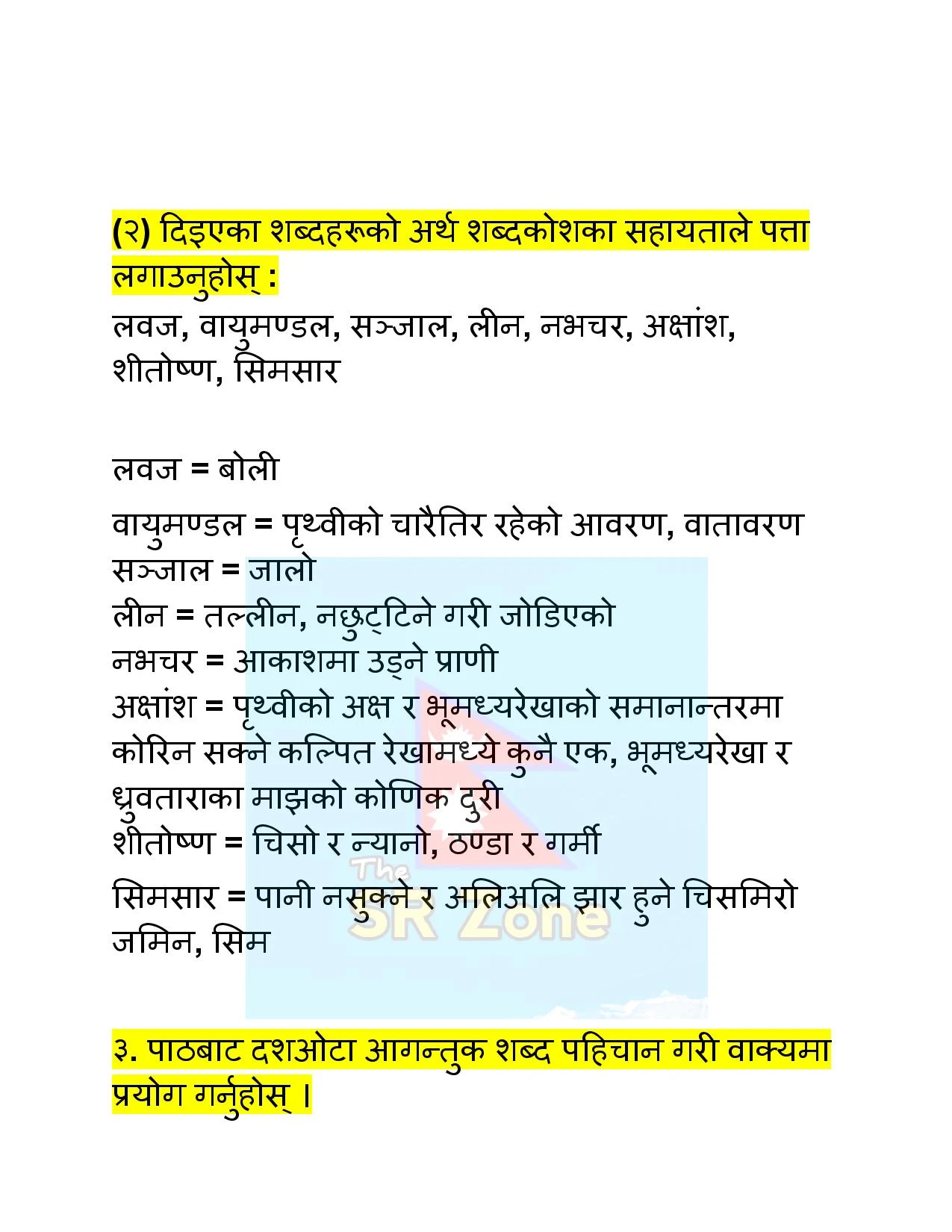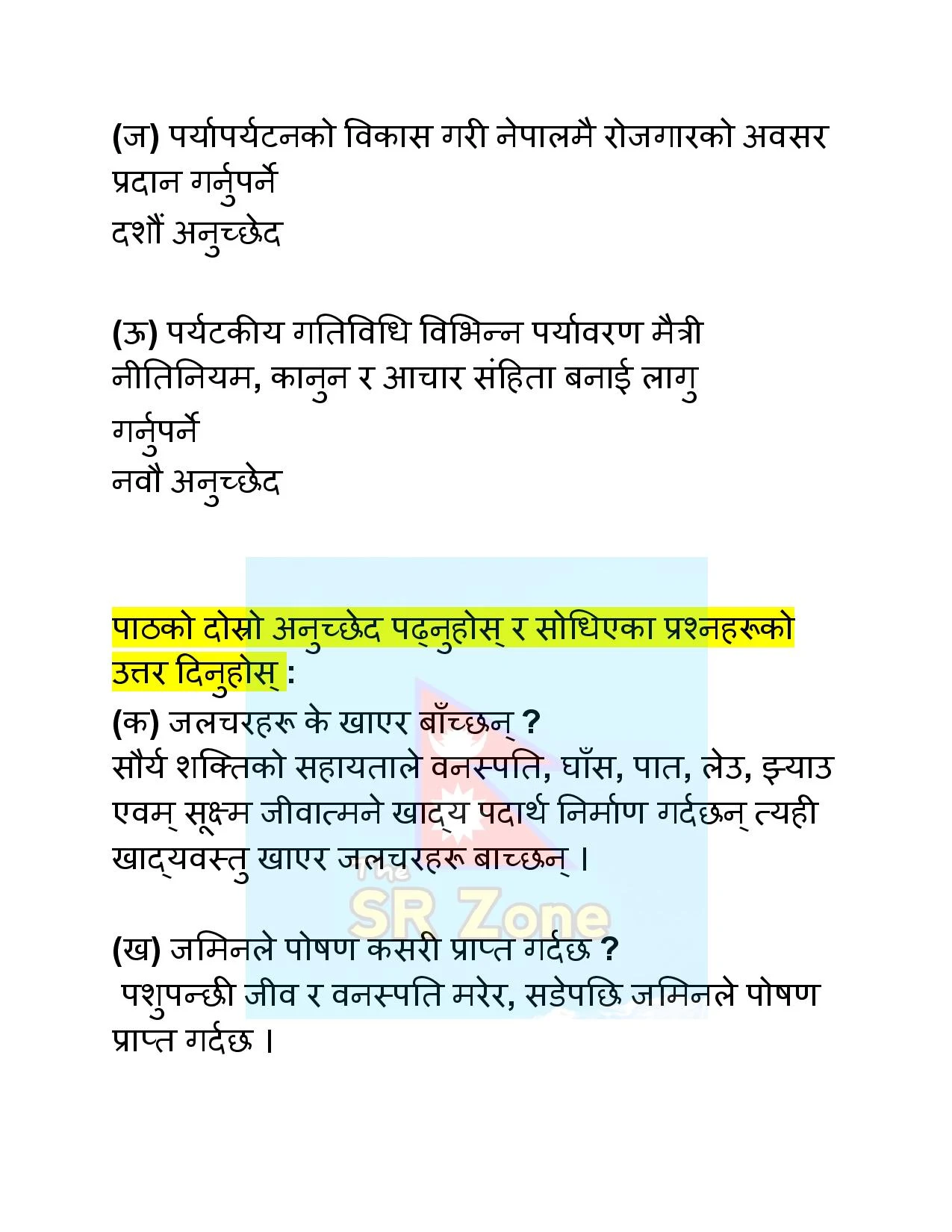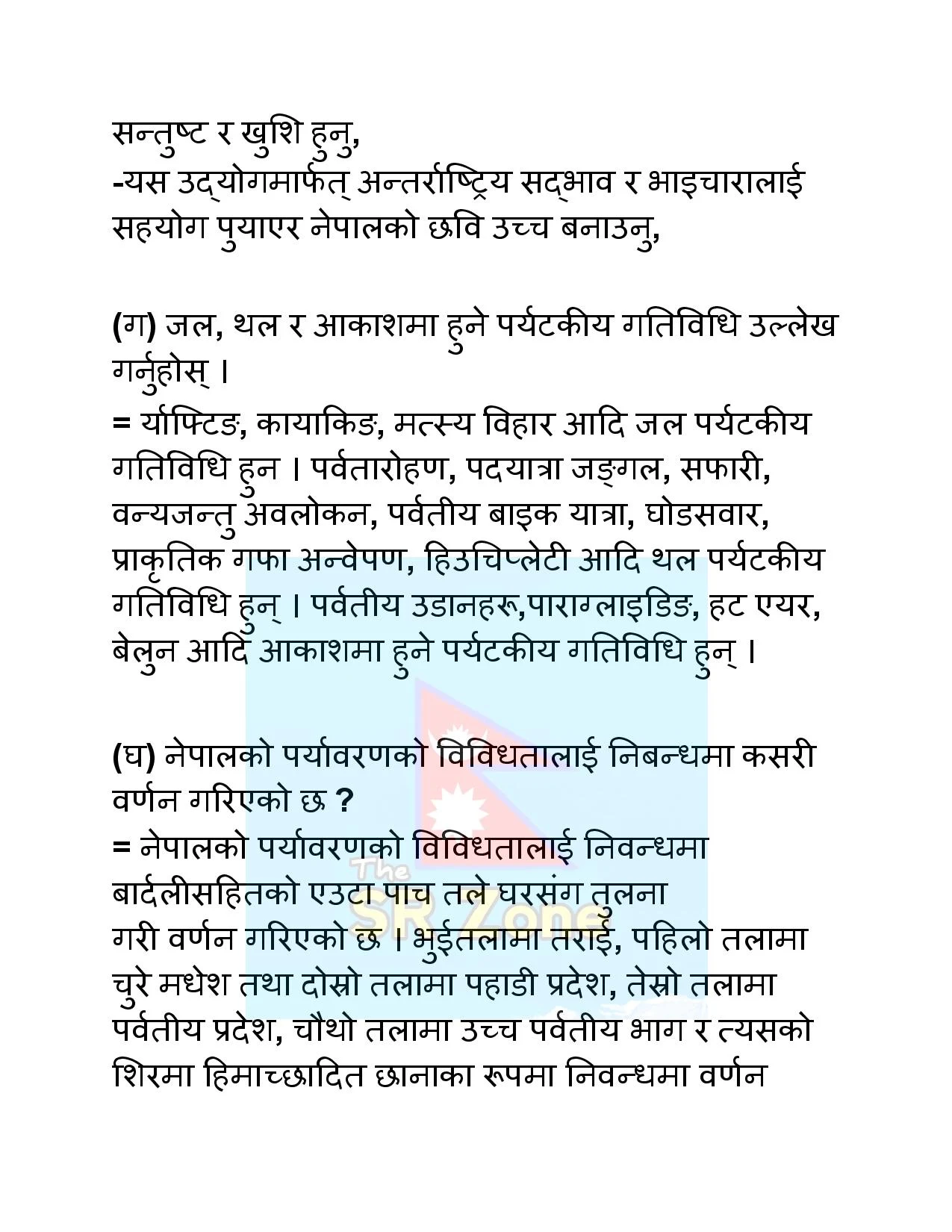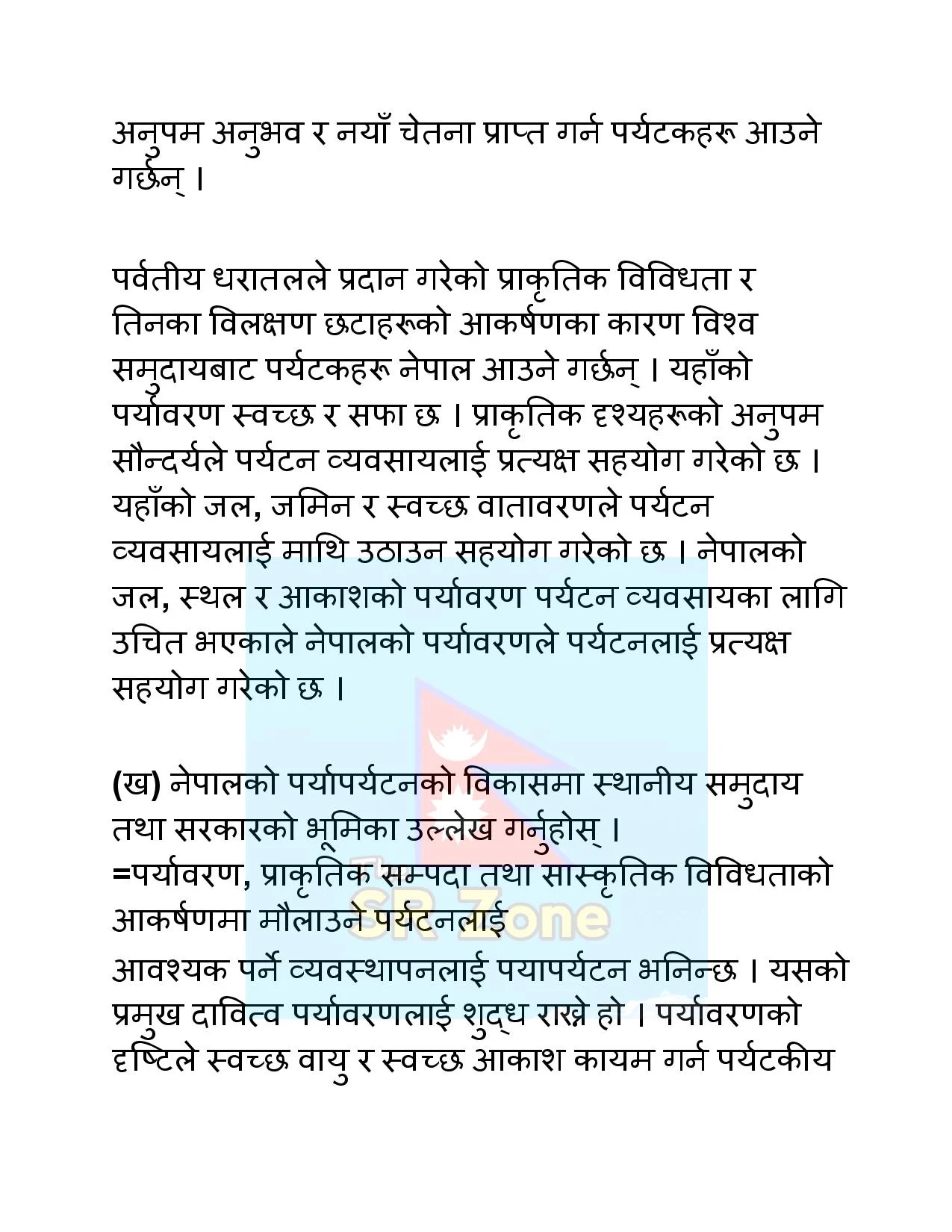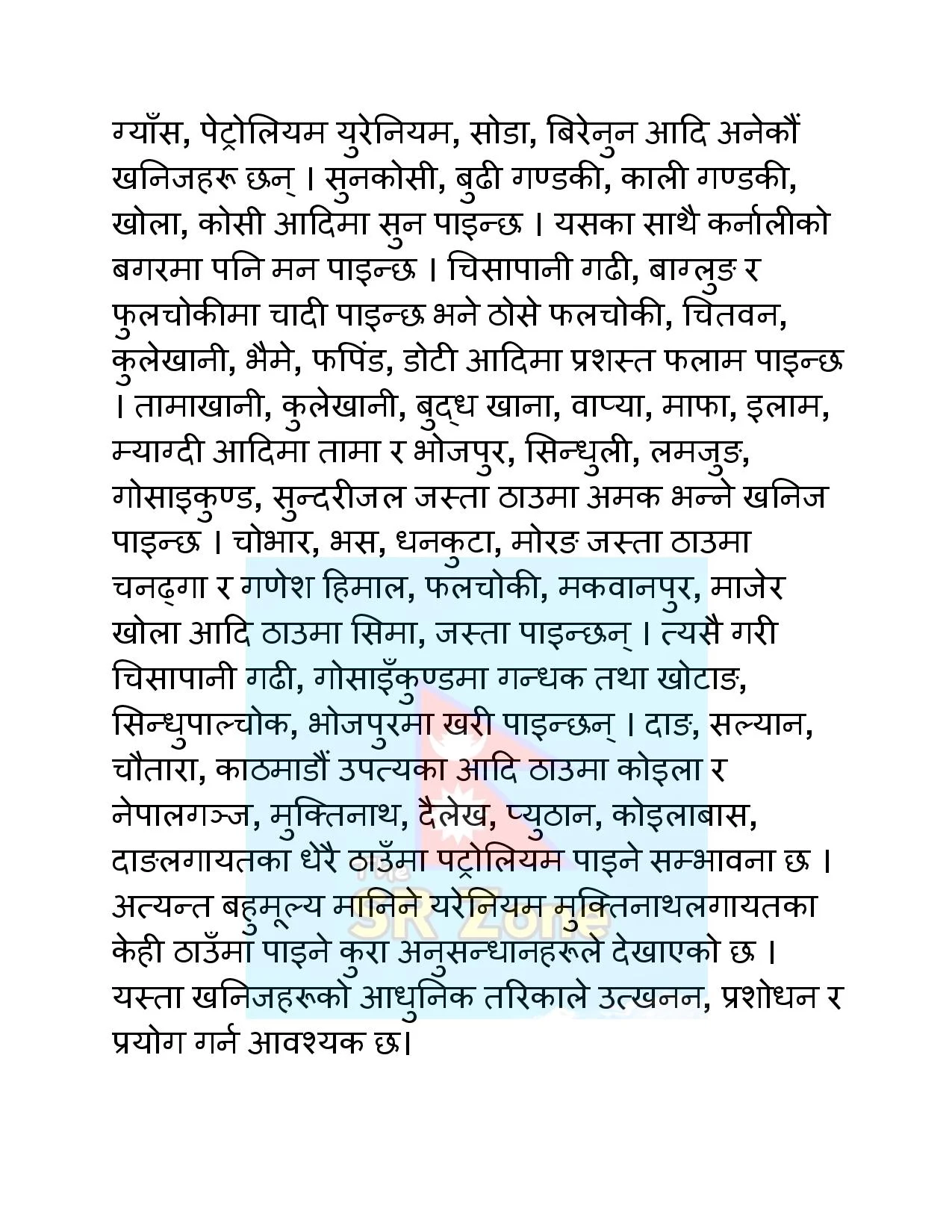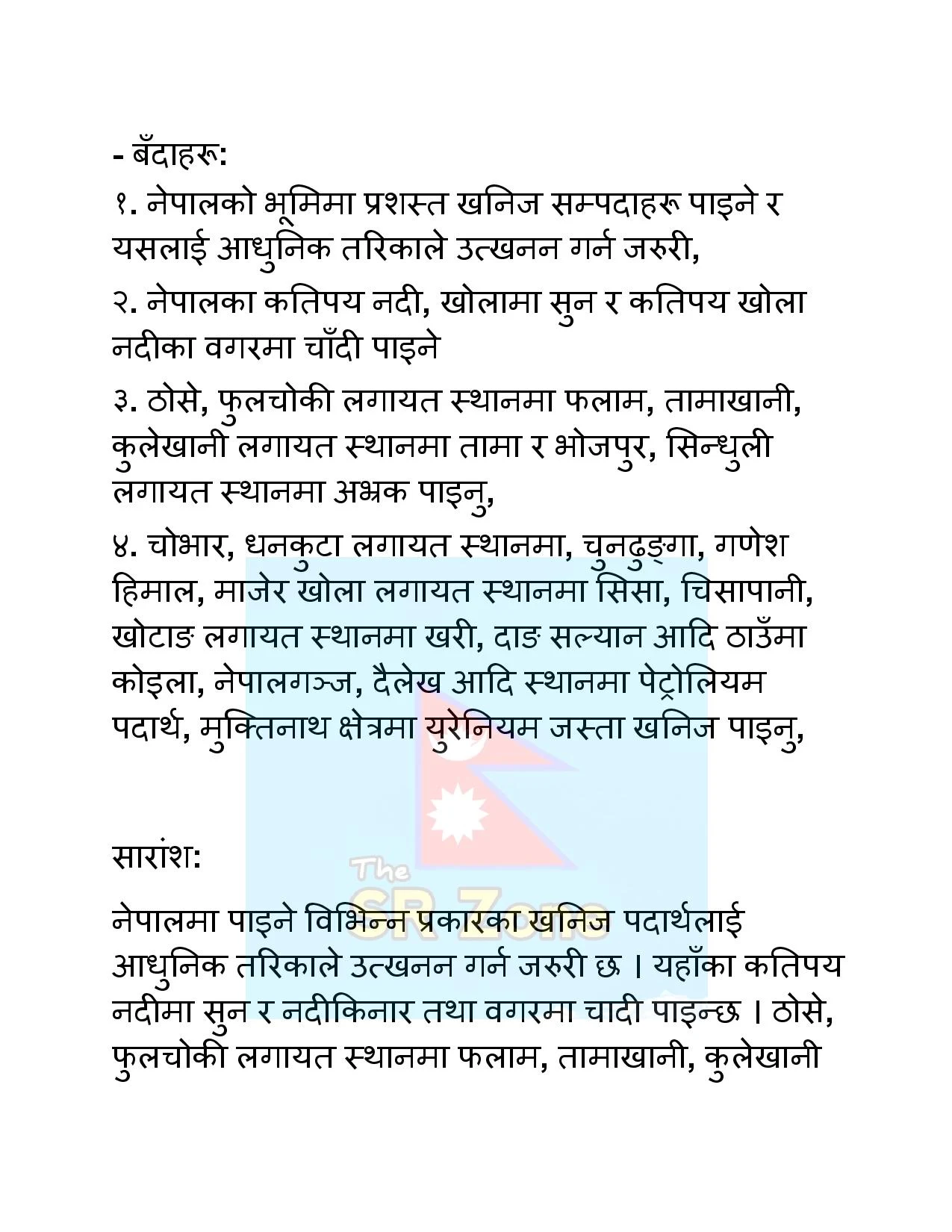Class 11 Nepali Chapter 7 : Paryparyatanka Sambhabana ra Aayam Exercise
Class 11 nepali book chapter 7 "Paryaparyatanka sambhawana ra Ayam" full exercise solution notes is here. Travel and Tourism, its dimensions, and possibilities in Nepal are discussed in this chapter.
In this essay, essayist Tirtha Bahadur Shrestha has presented a scientific perspective on Nepal's ecosystem, ecological diversity, natural beauty, biodiversity, and one of the possibilities derived from it, tourism and its dimensions. This article will discuss about the exercise solution, questions answers, summary and grammar solution of this chapter.
Paryaparyatan ka Sambhawana ra Aayam Exercise
Also Read:
Summary
The essay begins with an introduction of the many Ecos of the prefix 'eco' regarding the relationship and balance between people, nature, and the environment. Earth is our common home. Here water, land, air, sky, and light (light) between these five elements aquatic, terrestrial, non-aquatic and all birds live their lives. The existence of living beings has not been found on any other planet except Earth. So this is how we should all live.
There is no place to go other than this. All organic matter and inanimate matter in the earth's natural environment are interrelated. Whether it is a small pond or a vast ocean, the food network within the ecosystem is very complex. Everyone is connected to everyone. The process of a transaction between plants and animals continues. This is the transaction process.
In an ecosystem. If we destroy the earth's ecosystem, our very existence will be in crisis. Nepal's environment and its ecosystem have been compared to a five-storey tower. The Terai on the ground floor, the Chure Madhes and bensi on the first floor, the hilly region on the second floor, the hilly (Uplekali) region on the third floor, the high mountain (Lekali) part on the fourth floor, and the snow-capped roof at the top. On the northern facade of this building comes the province of Bardalike. Due to the natural diversity provided by the mountainous terrain and the attraction of its unique shades, the number of tourists coming to Nepal from the world community is increasing.
Tourism that thrives on the attraction of environment, natural resources and cultural diversity needs a special kind of management. That is what is commonly called tourism. The main responsibility of tourism is to keep the environment clean and not to disturb it. This business should support the nature conservation work by mobilizing financial and technical resources. In addition to that, financial support must reach the livelihood of the local people.
The current statistics show that about 11 lakh foreign tourists enter Nepal every year. The Government of Nepal aims to increase that.
We have to welcome the tourists in our natural home, that is, in our ecosystem. Their presence should not adversely affect our environment and the ecosystem. In the tourism business, both the householder and the guest should be careful. Only tourism business that is done on the basis of eco-friendly activities can be defined within the scope of tourism. Tourist activities are conducted on water, land, and even in the sky.
Mountaineering, trekking, boating, mountaineering, paragliding, etc. are becoming popular. From the point of view of the environment, in order to maintain clean air and a clean sky, tourism activities must be made environmentally friendly. Within the broad range of tourism, rural tourism, cultural tourism, pilgrimage, religious and spiritual tourism as well as educational tourism and research tourism have also started flourishing.
All of these activities take place within our ecosystem. Making our ecosystem healthy and sustainable should be based on environmentally friendly policies, rules, laws, and codes of conduct. We have to be aware of the tourist attractions of our village and place. The emigration of the new generation should also be stopped by creating employment opportunities for the new generation from the shadow of the natural and cultural heritage of local pride and stories.
In Nutshell, Tourism is like a boon for Nepal. Many visitors come to Nepal to visit and get fascinated by attractive and tempting hills, ponds, lakes, mountains, cultures, religious heritages, etc. Just the thing that matters is, their visit in Nepal should not mark any adverse effects on the ecosystem and environment.
This is the gist of "Paryaparyatanka sambhavana ra Aayam".

